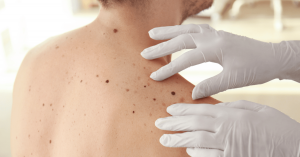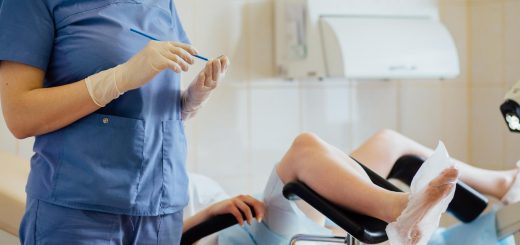Methods for removing neoplasms on the skin

Skin lesions can be harmless or a serious problem requiring a dermatologist, oncologist, or surgeon. If the growth is uncomfortable, it is important to determine the type and prescribe adequate treatment. Timely assistance will avoid negative consequences.
Varieties of neoplasms on the skin
Formations on the skin can be present from the moment of birth or appear during life. There are many types of neoplasms that are often able to distinguish only a specialist, based on the results of visual examination or analyzes.
Among the most common are the following skin formations:
papilloma;
nevus (birthmark);
seborrheic wart;
keratoma;
xanthoma;
atheroma.
When contacting the clinic, the dermatologist performs an examination and, if necessary, prescribes a biopsy, which reveals the nature of the neoplasm. Removal of neoplasms on the skin is carried out when they are injured, revealing a transformation into a malignant character, the appearance of bleeding, the formation of an areola around the eminence, itching, burning, redness, and rapid growth. Malignant ones are removed without fail to preserve the life and health of the patient.
Note! There are many reasons for the appearance of various types of neoplasms. It is important to know which ones are best removed and which ones can be left under medical supervision.
Methods for removing neoplasms on the skin
Modern methods of removing skin lesions are highly effective. There are 4 main types:
Radio wave apparatus. The procedure involves the complete destruction of the growth tissue by exposure to high-frequency radio waves. The radio knife has a thermal effect on the growth, resulting in boiling and evaporation of cells. The technology is minimally invasive and safe for adults and children. The procedure takes little time, and the patient does not need to stay in the clinic after. During the operation, adjacent tissues and vessels are not affected, which allows bleeding to be completely eliminated. The procedure does not cause swelling and inflammation. After the wound has healed, no scars are formed;
Cryodestruction is a modern method of removing growths by exposure to low temperatures – liquid nitrogen. Cryodestruction destroys neoplastic cells by turning them into ice crystals. The method has a wide range of applications both in cosmetology and surgery, gynecology;
Laser removal is a widespread method used for various skin imperfections. The procedure is painless and does not require preparation. It is performed under local anesthesia. Allowed for children from 5 years old and adults.
Surgical is the oldest method of removing formations, which is still highly effective in modern medicine. It is a mini-operation, during which the neoplasm is cut out, and the wound, if necessary, is sutured or sealed with a sterile plaster. This method is more traumatic, but convenient for further research of materials.
The destruction of small cosmetic defects and benign lesions is often carried out by excision with radio waves or freezing with liquid nitrogen.
Advantages of the radio wave method:
minimally invasive surgery that does not require preparation of the patient and stay in the clinic after the procedure;
the duration of the operation does not exceed 30 minutes;
does not leave scars;
there is no bleeding, since the vessels are cauterized during exposure to heat;
wound infection and bacteria penetration is excluded;
the minimum area of influence on the skin (the necrotic area takes up 10 times less volume than with alternative methods);
no suturing required.
Among the disadvantages are possible contraindications for the patient, as well as the possible formation of a pigmented spot at the site of surgery.
Advantages of cryodestruction:
the procedure can be carried out both on an outpatient basis and at home with special indications of the patient;
acceptable cost;
a safe and painless operation is performed under local anesthesia https://en.wikipedia.org/wiki/Local_anesthesia;
can be used even on the face, since cryodestruction practically leaves no traces.
Among the disadvantages, there are possible side effects – headache, fever, peeling of the skin.
The doctor determines the optimal way to remove skin lesions based on the collected anamnesis and the results of the study.


